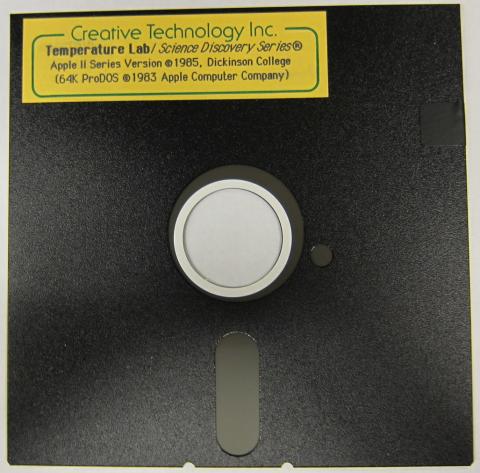Media
Software Development Floppy Disc
5 1/2 Floppy Disc
Text
Even once computers became small enough to put on a desk in the 1970s, the average American consumer could not possibly use the complex devices. Lacking any sort of pre-written software, hobby computers required an in-depth knowledge of computer architecture to operate. Hobbyists had to write their own software using computer languages developed by corporations and computer interest groups. Software, however, came to define the microcomputer, turning the machines into business tools, video game units, and educational devices.
The first viable, pre-written software for the microcomputer came from a small company known as Micro-Soft (the hyphen would be eliminated later), founded by Paul Allen and Bill Gates. Realizing the potential of the Altair 8800 microcomputer and the need for a reliable software language, the two developed a programming system for the computer using BASIC, a computer language developed at Dartmouth College. BASIC programming systems became industry standard for microcomputers for years after its initial 1977 Micro-Soft debut.
Micro-Soft’s pre-written BASIC programming software became standard on all Altair 8800 computers, establishing the prominence of the company and the feasibility of pre-written codes on microcomputers. Gates used his new-found public influence to condemn software sharing, starting a war against piracy that continues to this day.
Under Gates’ direction, Microsoft improved upon computer operation further by creating MS-DOS, an operating system that did not require users to code or know any computer language. This graphic user interface, or GUI (goo-ey) for short, broadened the computer’s appeal to a wider audience, and competed with other companies' operating systems, including an operating system developed under the direction of Steve Jobs for the Apple computer in the late 1970s.
The GUI opened the market of microcomputers to the average American consumer, producing a demand for pre-written software programs, or "applications," to perform various functions. Playing on the novelty of the personal computer and human-computer interaction, video games greatly increased the popularity of the microcomputer among casual users, and quickly became a profitable industry of their own. Schools of all levels were the first large-scale purchasers of microcomputers, drawn to educational programs including mathematical engines, simulation applications, and learning games. Businesses quickly followed suit, with word processers, electronic spreadsheets, and calculators creating high demand for efficient corporate programs.
These multiple possible uses attracted mainframe computer companies including International Business Machines (IBM) into the microcomputer market. IBM emerged with the first Personal Computer (PC) in 1981, soon dominating the microcomputer industry and increasing the popularity of the strange new devices.
For Further Reading:
Campbell-Kelly, Martin, William Aspray, Nathan Ensmenger, and Jeffrey R. Yost. Computer: A History of the Information Machine. Boulder, CO: Westview Press, 2014; Third edition.
Ceruzzi, Paul E. 2010. "'Ready Or Not, Computers are Coming to the People': Inventing the PC." OAH Magazine of History 24 (3): 25-28.

